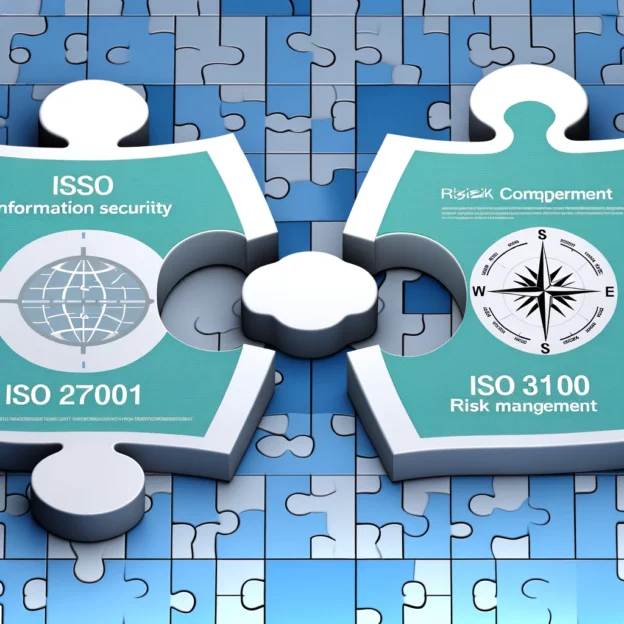This article delves into the comparative analysis and practical integration of ISO 27001 and ISO 31000 standards, focusing on their synergies in enhancing organizational risk management strategies. It offers insights into the distinct yet complementary roles of ISO 27001’s information security management and ISO 31000’s broader risk management frameworks, advocating for a unified approach to manage and mitigate diverse organizational risks effectively.
Introduction
In the ever-evolving landscape of organizational risk and information security, the adoption and integration of international standards like ISO 27001 and ISO 31000 play a pivotal role in safeguarding assets and ensuring resilience. ISO 27001, dedicated to information security management systems (ISMS), provides a structured framework for managing information security risks tailored to an organization’s needs. In contrast, ISO 31000 offers a holistic view of risk management, applicable across various sectors and types of risks. This article compares these standards in-depth, highlighting their intersections and the feasibility of mapping output risks from ISO 27001 into input risks for ISO 31000, fostering a comprehensive risk management strategy.
Comparison of ISO 27001 and ISO 31000
- ISO 27001: This is an international standard for information security management systems (ISMS). It outlines a framework for establishing, implementing, maintaining, and continually improving an ISMS. The standard includes requirements for assessing and treating information security risks tailored to the needs of the organization.
- ISO 31000: This standard focuses on risk management. It provides guidelines, principles, a framework, and a process for managing risk. It can be used by any organization regardless of its size, activity, or sector. Unlike ISO 27001, which is specific to information security, ISO 31000 provides a more generic approach to risk management that can be applied to various types of risks in different areas.
How They Intersect
- Risk Management Focus: Both standards have a strong focus on risk management. ISO 27001 is specific to information security risks, whereas ISO 31000 covers all forms of risk.
- Framework and Process Approach: Both standards advocate a systematic approach to managing risks, whether it’s for information security (ISO 27001) or more broadly (ISO 31000).
- Continuous Improvement: Each standard emphasizes the importance of continual improvement in their respective domains.
Mapping Output Risks from ISO 27001 into Input Risks to ISO 31000
- Feasibility: It’s feasible to map risks identified in an ISO 27001 ISMS (output risks) to the broader ISO 31000 risk management process. This can be useful for organizations looking to integrate their information security risk management with broader enterprise risk management practices.
- Method: You would typically start by identifying the output risks from your ISO 27001 risk assessment. These risks, which pertain specifically to information security, can then be considered as input risks for the broader risk management process under ISO 31000. This would involve analyzing how these information security risks impact other areas of the business, aligning them with broader business objectives, and managing them within the wider context of organizational risk.
- Integration: This integration ensures that information security risks are not managed in isolation but are considered part of the organization’s overall risk landscape. This approach allows for more comprehensive risk management and ensures that information security is aligned with broader business goals.
By effectively integrating these two standards, an organization can ensure a more holistic and effective approach to managing both specific information security risks and broader organizational risks.
Conclusion
The comparative analysis of ISO 27001 and ISO 31000 reveals a strategic alignment in their core objectives, managing and mitigating risks within an organizational context. By integrating the specific information security risks identified through ISO 27001 with the broader risk management framework of ISO 31000, organizations can achieve a more robust, holistic approach to risk management. This not only ensures that information security risks are addressed within the larger organizational risk landscape but also aligns security initiatives with broader business goals, leading to enhanced resilience and operational excellence.
